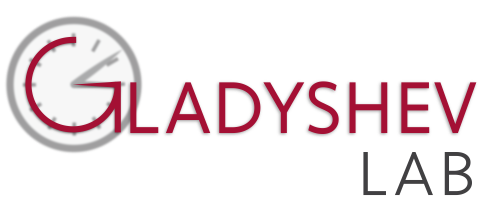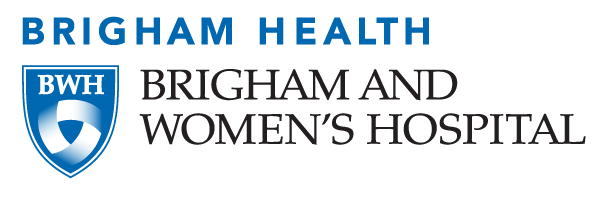2023 Articles
Li CZ, Haghani A, Yan Q, Lu AT, Zhang J, Fei Z, Ernst J, Yang W, Gladyshev VN, Raj K, Seluanov A, Gorbunova V, Horvath S. Epigenetic predictors of species maximum lifespan and other life history traits in mammals. bioRxiv. doi: https://doi.org/10.1101/2023.01.09.523139
Liu W, Zhu P, Li M, Li Z, Yu Y, Liu G, Du J, Wang X, Yang J, Tian R, Seim I, Kaya A, Li M, Li M, Gladyshev VN, Zhou X. Evolutionary transcriptomics reveals longevity mostly driven by polygenic and indirect selection in mammals. bioRxiv. doi: https://doi.org/10.1101/2023.01.09.523139
Barlit H, Romero AM, Gülhan A, Patnaik PK, Tyshkovskiy A, Martínez-Pastor MT, Gladyshev VN, Puig S, Labunskyy VM. Genome-wide ribosome profiling uncovers the role of iron in the control of protein translation. bioRxiv. doi: https://doi.org/10.1101/2022.09.22.509115
Ying K, Liu H, Tarkhov AE, Sadler MC, Lu AT, Moqri M, Horvath S, Kutalik Z, Shen X, Gladyshev VN. Causality-Enriched Epigenetic Age Uncouples Damage and Adaptation. Nat Aging. doi: 10.1038/s43587-023-00557-0.
Zhang Z, Tian X, Lu JY, Boit K, Ablaeva J, Zakusilo FT, Emmrich S, Firsanov D, Rydkina E, Biashad SA, Lu Q, Tyshkovskiy A, Gladyshev VN, Horvath S, Seluanov A, Gorbunova V. Increased hyaluronan by naked mole-rat Has2 improves healthspan in mice. Nature. doi: 10.1038/s41586-023-06463-0.
Kerepesi C, Gladyshev VN. Intersection clock reveals a rejuvenation event during human embryogenesis. Aging Cell. doi: 10.1111/acel.13922.
Tarkhov AE, Lindstrom-Vautrin T, Zhang S, Ying K, Moqri M, Zhang B, Vadim N. Gladyshev. Nature of epigenetic aging from a single-cell perspective. bioRxiv. doi: https://doi.org/10.1101/2022.09.26.509592
Chen Q, Dwaraka VB, Carreras-Gallo N, Mendez K, Chen Y, Begum S, Kachroo P, Prince N, Went H, Mendez T, Lin A, Turner L, Moqri M, Chu SH, Kelly RS, Weiss ST, Rattray NJW, Gladyshev VN, Karlson E, Wheelock C, Mathé EA, Dahlin A, McGeachie MJ, Smith R, Lasky-Su JA. OMICmAge: An integrative multi-omics approach to quantify biological age with electronic medical records. bioRxiv. DOI: 10.1101/2023.10.16.562114
Aguado J, Amarilla AA, Taherian Fard A, Albornoz EA, Tyshkovskiy A, Schwabenland M, Chaggar HK, Modhiran N, Gómez-Inclán C, Javed I, Baradar AA, Liang B, Peng L, Dharmaratne M, Pietrogrande G, Padmanabhan P, Freney ME, Parry R, Sng JDJ, Isaacs A, Khromykh AA, Valenzuela Nieto G, Rojas-Fernandez A, Davis TP, Prinz M, Bengsch B, Gladyshev VN, Woodruff TM, Mar JC, Watterson D, Wolvetang EJ. Senolytic therapy alleviates physiological human brain aging and COVID-19 neuropathology. Nat Aging. doi: 10.1038/s43587-023-00519-6.
Poganik JR, Gladyshev VN. We need to shift the focus of aging research to aging itself Proc Natl Acad Sci U S A. DOI: 10.1073/pnas.2307449120
Fernando R, Shindyapina AV, Ost M, Santesmasses D, Hu Y, Tyshkovskiy A, Yim SH, Weiss J, Gladyshev VN, Grune T Castro JP. Downregulation of mitochondrial metabolism is a driver for fast skeletal muscle loss during mouse aging. Commun Biol. doi: 10.1038/s42003-023-05595-3.
Moqri M, Herzog C, Poganik JR; Biomarkers of Aging Consortium; Justice J, Belsky DW, Higgins-Chen A, Moskalev A, Fuellen G, Cohen AA, Bautmans I, Widschwendter M, Ding J, Fleming A, Mannick J, Han JJ, Zhavoronkov A, Barzilai N, Kaeberlein M, Cummings S, Kennedy BK, Ferrucci L, Horvath S, Verdin E, Maier AB, Snyder MP, Sebastiano V, Gladyshev VN. Biomarkers of aging for the identification and evaluation of longevity interventions. Cell. doi: 10.1016/j.cell.2023.08.003.
Tyshkovskiy A, Ma S, Shindyapina AV, Tikhonov S, Lee SG, Bozaykut P, Castro JP, Seluanov A, Schork NJ, Gorbunova V, Dmitriev SE, Miller RA, Gladyshev VN. (2023). Distinct longevity mechanisms across and within species and their association with aging. Cell. doi: 10.1016/j.cell.2023.05.002.
Liu W, Zhu P, Li M, Li Z, Yu Y, Liu G, Du J, Wang X, Yang J, Tian R, Seim I, Kaya A, Li M, Li M, Gladyshev VN, Zhou X.(2023). Large-scale across species transcriptomic analysis identifies genetic selection signatures associated with longevity in mammals EMBO J. doi: 10.15252/embj.2022112740.
Ogrodnik M, Gladyshev VN.(2023). The meaning of adaptation in aging: insights from cellular senescence, epigenetic clocks and stem cell alterations. Nat Aging. doi: 10.1038/s43587-023-00447-5.
Yang JH, Petty CA, Dixon-McDougall T, Lopez MV, Tyshkovskiy A, Maybury-Lewis S, Tian X, Ibrahim N, Chen Z, Griffin PT, Arnold M, Li J, Martinez OA, Behn A, Rogers-Hammond R, Angeli S, Gladyshev VN, Sinclair DA. (2023). Chemically induced reprogramming to reverse cellular aging. Aging (Albany NY). doi: 10.18632/aging.204896.
Lu AT, Fei Z, Haghani A, Robeck TR, Zoller JA, Li CZ, Lowe R, Yan Q, Zhang J, Vu H, Ablaeva J, Acosta-Rodriguez VA, Adams DM, Almunia J, Aloysius A, Ardehali R, Arneson A, Baker CS, Banks G, Belov K, Bennett NC, Black P, Blumstein DT, Bors EK, Breeze CE, Brooke RT, Brown JL, Carter GG, Caulton A, Cavin JM, Chakrabarti L, Chatzistamou I, Chen H, Cheng K, Chiavellini P, Choi OW, Clarke SM, Cooper LN, Cossette ML, Day J, DeYoung J, DiRocco S, Dold C, Ehmke EE, Emmons CK, Emmrich S, Erbay E, Erlacher-Reid C, Faulkes CG, Ferguson SH, Finno CJ, Flower JE, Gaillard JM, Garde E, Gerber L, Gladyshev VN, Gorbunova V, Goya RG, Grant MJ, Green CB, Hales EN, Hanson MB, Hart DW, Haulena M, Herrick K, Hogan AN, Hogg CJ, Hore TA, Huang T, Izpisua Belmonte JC, Jasinska AJ, Jones G, Jourdain E, Kashpur O, Katcher H, Katsumata E, Kaza V, Kiaris H, Kobor MS, Kordowitzki P, Koski WR, Krützen M, Kwon SB, Larison B, Lee SG, Lehmann M, Lemaitre JF, Levine AJ, Li C, Li X, Lim AR, Lin DTS, Lindemann DM, Little TJ, Macoretta N, Maddox D, Matkin CO, Mattison JA, McClure M, Mergl J, Meudt JJ, Montano GA, Mozhui K, Munshi-South J, Naderi A, Nagy M, Narayan P, Nathanielsz PW, Nguyen NB, Niehrs C, O’Brien JK, O’Tierney Ginn P, Odom DT, Ophir AG, Osborn S, Ostrander EA, Parsons KM, Paul KC, Pellegrini M, Peters KJ, Pedersen AB, Petersen JL, Pietersen DW, Pinho GM, Plassais J, Poganik JR, Prado NA, Reddy P, Rey B, Ritz BR, Robbins J, Rodriguez M, Russell J, Rydkina E, Sailer LL, Salmon AB, Sanghavi A, Schachtschneider KM, Schmitt D, Schmitt T, Schomacher L, Schook LB, Sears KE, Seifert AW, Seluanov A, Shafer ABA, Shanmuganayagam D, Shindyapina AV, Simmons M, Singh K, Sinha I, Slone J, Snell RG, Soltanmaohammadi E, Spangler ML, Spriggs MC, Staggs L, Stedman N, Steinman KJ, Stewart DT, Sugrue VJ, Szladovits B, Takahashi JS, Takasugi M, Teeling EC, Thompson MJ, Van Bonn B, Vernes SC, Villar D, Vinters HV, Wallingford MC, Wang N, Wayne RK, Wilkinson GS, Williams CK, Williams RW, Yang XW, Yao M, Young BG, Zhang B, Zhang Z, Zhao P, Zhao Y, Zhou W, Zimmermann J, Ernst J, Raj K, Horvath S.(2023). Universal DNA methylation age across mammalian tissues. Nat Aging. doi: 10.1038/s43587-023-00462-6.
Tyshkovskiy A, Zhang S, Gladyshev VN. (2023). Accelerated transcriptional elongation during aging impairs longevity. Cell Res. doi: 10.1038/s41422-023-00829-9.
Haghani A, Li CZ, Robeck TR, Zhang J, Lu AT, Ablaeva J, Acosta-Rodríguez VA, Adams DM, Alagaili AN, Almunia J, Aloysius A, Amor NMS, Ardehali R, Arneson A, Baker CS, Banks G, Belov K, Bennett NC, Black P, Blumstein DT, Bors EK, Breeze CE, Brooke RT, Brown JL, Carter G, Caulton A, Cavin JM, Chakrabarti L, Chatzistamou I, Chavez AS, Chen H, Cheng K, Chiavellini P, Choi OW, Clarke S, Cook JA, Cooper LN, Cossette ML, Day J, DeYoung J, Dirocco S, Dold C, Dunnum JL, Ehmke EE, Emmons CK, Emmrich S, Erbay E, Erlacher-Reid C, Faulkes CG, Fei Z, Ferguson SH, Finno CJ, Flower JE, Gaillard JM, Garde E, Gerber L, Gladyshev VN, Goya RG, Grant MJ, Green CB, Hanson MB, Hart DW, Haulena M, Herrick K, Hogan AN, Hogg CJ, Hore TA, Huang T, Izpisua Belmonte JC, Jasinska AJ, Jones G, Jourdain E, Kashpur O, Katcher H, Katsumata E, Kaza V, Kiaris H, Kobor MS, Kordowitzki P, Koski WR, Krützen M, Kwon SB, Larison B, Lee SG, Lehmann M, Lemaître JF, Levine AJ, Li X, Li C, Lim AR, Lin DTS, Lindemann DM, Liphardt SW, Little TJ, Macoretta N, Maddox D, Matkin CO, Mattison JA, McClure M, Mergl J, Meudt JJ, Montano GA, Mozhui K, Munshi-South J, Murphy WJ, Naderi A, Nagy M, Narayan P, Nathanielsz PW, Nguyen NB, Niehrs C, Nyamsuren B, O’Brien JK, Ginn PO, Odom DT, Ophir AG, Osborn S, Ostrander EA, Parsons KM, Paul KC, Pedersen AB, Pellegrini M, Peters KJ, Petersen JL, Pietersen DW, Pinho GM, Plassais J, Poganik JR, Prado NA, Reddy P, Rey B, Ritz BR, Robbins J, Rodriguez M, Russell J, Rydkina E, Sailer LL, Salmon AB, Sanghavi A, Schachtschneider KM, Schmitt D, Schmitt T, Schomacher L, Schook LB, Sears KE, Seifert AW, Shafer ABA, Shindyapina AV, Simmons M, Singh K, Sinha I, Slone J, Snell RG, Soltanmohammadi E, Spangler ML, Spriggs M, Staggs L, Stedman N, Steinman KJ, Stewart DT, Sugrue VJ, Szladovits B, Takahashi JS, Takasugi M, Teeling EC, Thompson MJ, Van Bonn B, Vernes SC, Villar D, Vinters HV, Vu H, Wallingford MC, Wang N, Wilkinson GS, Williams RW, Yan Q, Yao M, Young BG, Zhang B, Zhang Z, Zhao Y, Zhao P, Zhou W, Zoller JA, Ernst J, Seluanov A, Gorbunova V, Yang XW, Raj K, Horvath S.(2023). DNA methylation networks underlying mammalian traits. Science. doi: 10.1126/science.abq5693.
Vijg J, Schumacher B, Abakir A, Antonov M, Bradley C, Cagan A, Church G, Gladyshev VN, Gorbunova V, Maslov AY, Reik W, Sharifi S, Suh Y, Walsh K (2023). Mitigating age-related somatic mutation burden. Trends Mol Med doi: 10.1016/j.molmed.2023.04.002.
Mitchell W, Goeminne L, Tyshkovskiy A, Zhang S, Paulo J, Pierce K, Choy A, Clish C, Gygi S, Gladyshev VN (2023). Multi-omics characterization of partial chemical reprogramming reveals evidence of cell rejuvenation. bioRxiv doi: https://doi.org/10.1101/2023.06.30.546730
Zhang B, Lee DE, Trapp A, Tyshkovskiy A, Lu AT, Bareja A, Kerepesi C, McKay LK, Shindyapina AV, Dmitriev SE, Baht GS, Horvath S, Gladyshev VN, White JP. (2023). Multi-omic rejuvenation and life span extension on exposure to youthful circulation. Nature Aging doi: 10.1038/s43587-023-00451-9.
Poganik JR, Zhang B, Baht GS, Tyshkovskiy A, Deik A, Kerepesi C, Yim SH, Lu AT, Haghani A, Gong T, Hedman AM, Andolf E, Pershagen G, Almqvist C, Clish CB, Horvath S, White JP, Gladyshev VN. (2023). Biological age is increased by stress and restored upon recovery. Cell Metabolism. doi: 10.1016/j.cmet.2023.03.015.
Ying K, Tyshkovskiy A, Trapp A, Liu H, Moqri M, Kerepesi C, Gladyshev VN (2023). ClockBase: a comprehensive platform for biological age profiling in human and mouse. bioRxiv. doi: 10.1101/2023.02.28.530532
Yang JH, Hayano M, Griffin PT, Amorim JA, Bonkowski MS, Apostolides JK, Salfati EL, Blanchette M, Munding EM, Bhakta M, Chew YC, Guo W, Yang X, Maybury-Lewis S, Tian X, Ross JM, Coppotelli G, Meer MV, Rogers-Hammond R, Sinclair DA (2023). Loss of epigenetic information as a cause of mammalian aging. Cell. doi: 10.1016/j.cell.2022.12.027
Moldakozhayev A, & Gladyshev VN (2023). Metabolism, homeostasis, and aging. Trends Endocrinol Metab. doi: 10.1016/j.tem.2023.01.003
Liberman N, Rothi MN, Gerashchenko MV, Zorbas C, Boulias K, MacWhinnie FG, Ying AK, Taylor AF, Haddad JA, Shibuya H, Roach L, Dong A, Dellacona S, Lafontaine DL, Gladyshev VN, Greer EL. 18S rRNA methyltransferases DIMT1 and BUD23 drive intergenerational hormesis. Molecular Cell. doi: https://doi.org/10.1016/j.molcel.2023.08.014
Ying K, Paulson S, Perez-Guevara M, Emamifar M, Martínez MC, Kwon D, Poganik JR, Moqri M, Gladyshev VN. Biolearn, an open-source library for biomarkers of aging. bioRxiv doi: https://doi.org/10.1101/2023.12.02.569722
Firsanov D, Zacher M, Tian X, Zhao Y, George JC, Sformo TL, Tombline G, Biashad SA, Gilman A, Hamilton N, Patel A, Straight M, Lee M, Lu YJ, Haseljic E, Williams A, Miller N, Gladyshev VN, Zhang Z, Vijg J, Seluanov A, Gorbunova V. DNA repair and anti-cancer mechanisms in the longest-living mammal: the bowhead whale. bioRxiv doi: https://doi.org/10.1101/2023.05.07.539748
Ying K, Hanna Liu H, Andrei E. Tarkhov AE, Sadler MC, Lu AT, Moqri M, Horvath S, Kutalik Z, Shen X, Gladyshev VN. Causality-Enriched Epigenetic Age Uncouples Damage and Adaptation. bioRxiv doi: https://doi.org/10.1101/2022.10.07.511382
Bennett DF, Goyala A, Statzer C, Beckett CW, Tyshkovskiy A, Gladyshev VN, Ewald CY, & de Magalhães JP (2023). Rilmenidine extends lifespan and healthspan in Caenorhabditis elegans via a nischarin I1-imidazoline receptor. Aging Cell. doi: 10.1111/acel.13774



